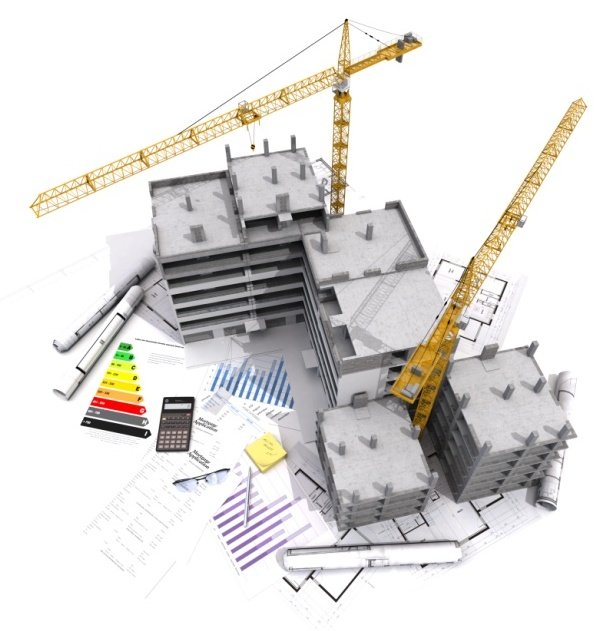The term cost means the expenditure to produce a commodity having a value. By book cost, it is meant the cost which shows the original investment of the investor on its assets. The cost of construction of a building can be arrived at by various methods such as
01. Account Method
02. Detailed Itemwise Method
03. Plinth Area Method
04. Cubic Content Basis
05. Unit Basis
The method of estimating the cost of construction on cubic content basis is adopted being more reliable by most of the Engineers & Valuers. It can be done by adopting the external measurements and then applying the rate per cubic meter.

For arriving at the rate per CUM of the cost of construction at prevailing prices, the cost of all the building materials from a nail to reinforcement bars prevailing in the market during the period of construction and the prevailing labour rates for skilled as well as unskilled labour have to take into consideration. It also depends on the type and design of the structure, the use of which it will be gut, the motive behind it i.e. whether it is built for the investor himself or construction is done for commercial purposes, the fees of the engineer, the profit of the contractor and supervision, management and establishment charges.
While arriving at the rate per cum cost of construction, I have taken into consideration the following factors:
Considerations for Valuation of Cost of Construction
01. Type of the structure whether RCC framed, timber framed or load bearing wall type.
02. The quality of the materials used and the quality of the workmanship.
03. The condition, size & quantity of RCC works, woodwork, brickwork.
04. Finishing of the building like plaster, paint, polishing, tiles, marbles, white glazed tiles etc.
05. Type and quality of fixtures, fastenings and accessories like hinges, aldrops, handles, screws, pumps, lifts, pipes, electrical accessories, sanitary installations and steel tanks etc.
06. Quantity, quality and condition of doors and windows, together with the materials of which they are made up.
07. The water supply and sanitary arrangements and facilities provided.
08. Type of the roof.
09. Ornamental and architectural features.
10. The period of construction.
Sometimes, the owner may use second-hand materials like bricks, doors, windows and fittings etc. Depending upon the extent and use of materials, the deduction allowed may vary.
As explained earlier, the cost of a building depends on the cost of materials used in the building and the cost of labour involved in its construction. Since prices of materials and labour vary from place to place, the cost of construction of even identical building need not necessary be the same at all places in the country. In fact, depending upon the cost of local building materials and skilled and unskilled labour, cost of construction varies from place to place in the country. With the help of prices of basic materials and labour, values known as ‘building cost index’ figures are worked out for a number of cities and towns in the country. This building’s cost index figures reflect reasonably degree variations in the cost of construction at different places.
Cost of construction is a complicated question as specifications employed are of so varying type and so largely different from each other and also the rates of material do not only vary from time to time, place to place, but also from person to person i.e. based on promptness of payment, personal contacts and understanding of the subject. Thus, applying any firm formula is not possible and differences in the rates for the cost of construction are bound to be there from property to property.
One has also limited scope of physical examination of a structure already constructed excepting superficial inspection and or testing some materials in case of doubt to ascertain the specifications and the quality of materials actually used. It is more so difficult in the case of RCC structural elements as the reinforcing bars are buried inside and also the sizes of various structural elements also cannot be measured accurately. Mere the space and size are also not sufficient to examine their soundness and usefulness. Obviously, documents like plans, estimate, structural details form the basis of computation of cost. But in many cases, they are not available. The works executed through contractors can be assessed more accurately provided the tender documents, design and construction drawings, work orders, certified bills and vouchers and other relevant documents are available.
